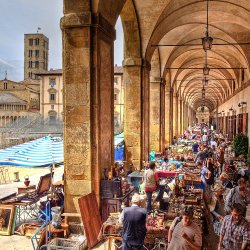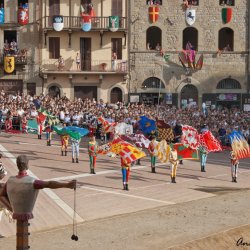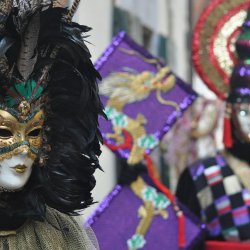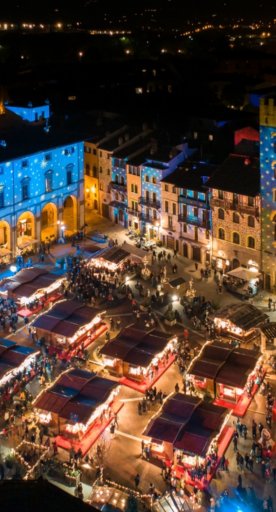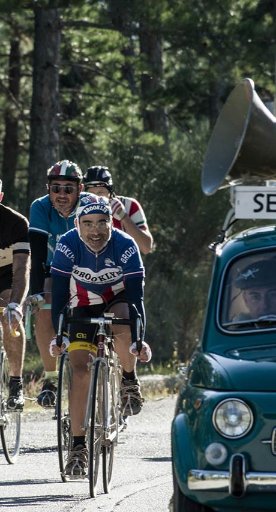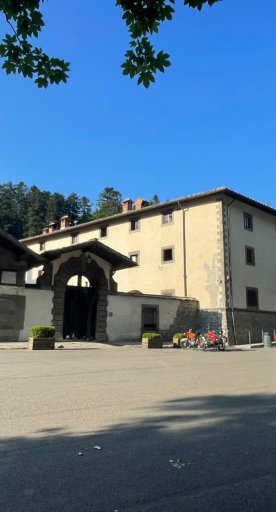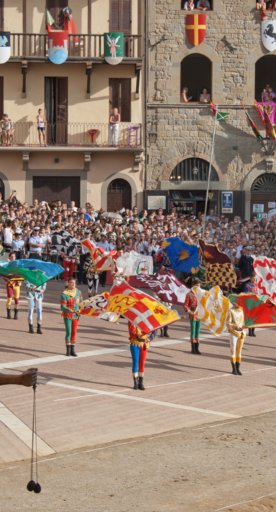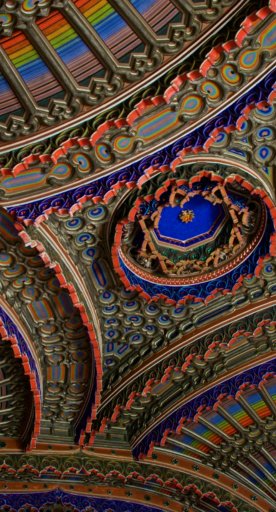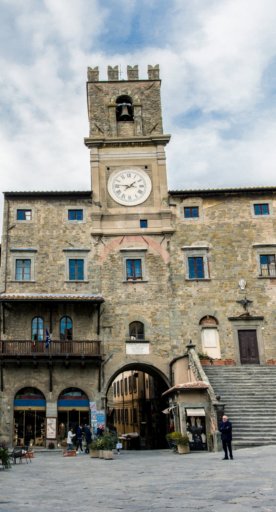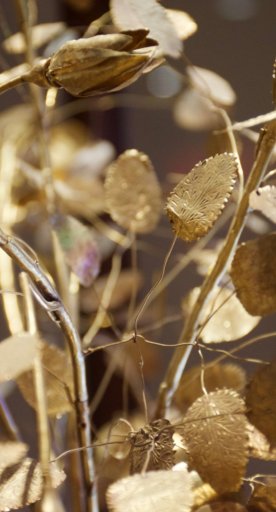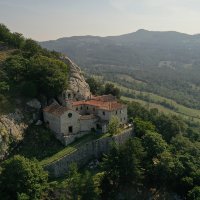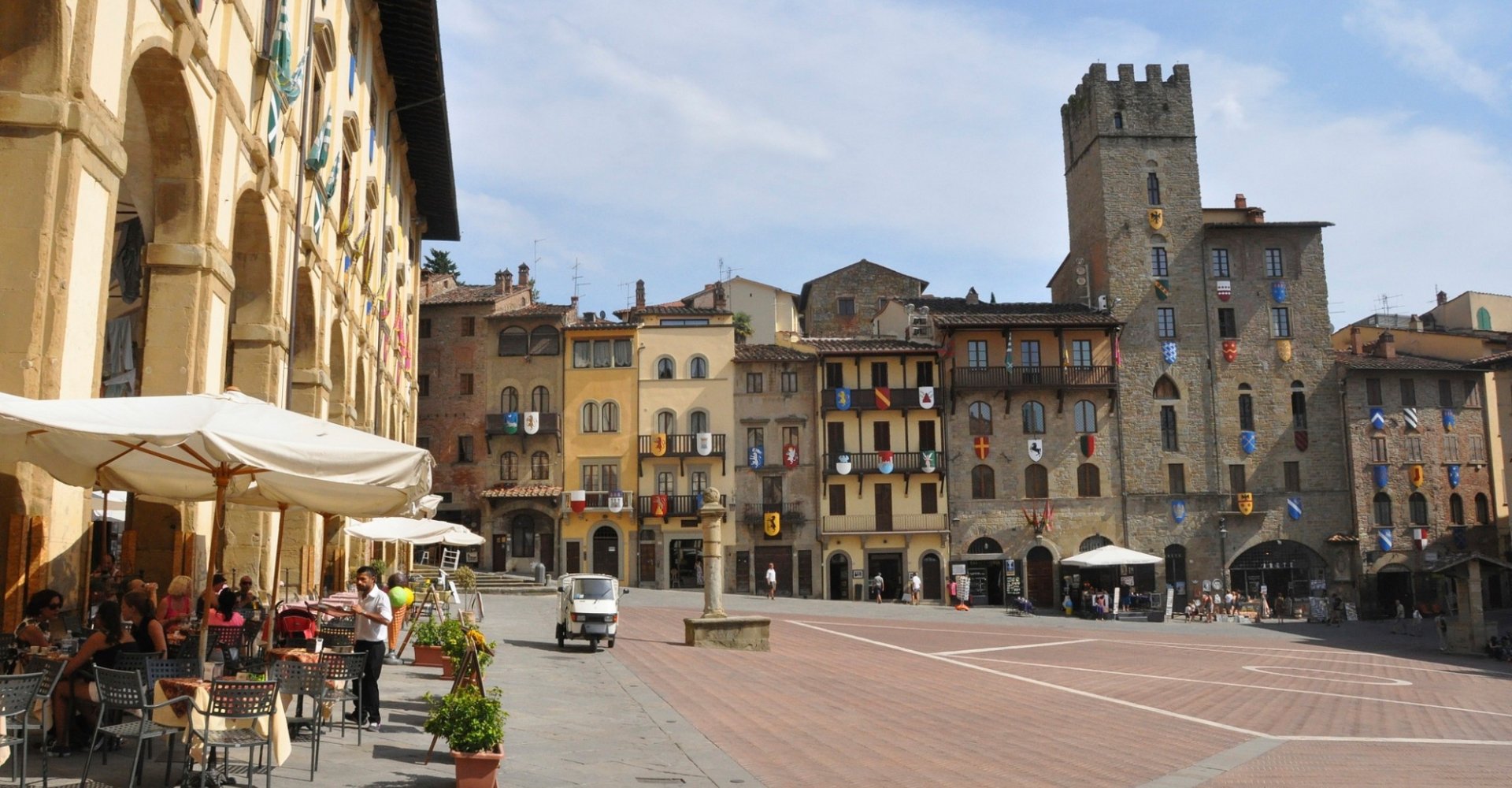
10 Things to do in Arezzo
Check out these highlights and enjoy the best of the city
The city of Arezzo, in the South-West of Tuscany, was one of the major Etruscan Lucumonies and later became a strategic Roman center.
In the Middle Ages it became a free commune in which the Ghibelline faction prevailed and conflicted with Florence, but after the battle of Campaldino in 1289 Arezzo became a Florentine and part of the Grand Duchy of the Medici family.
An intense history that has left numerous remanings still visible today, as well as traces left by the many illustrious figures who were born and lived here, such as Vasari, Piero della Francesca, Guido Monaco, Francesco Redi and Francesco Petrarca.
Here is a list of 10 things not to be missed during a visit to this city often overlooked by the tourist routes.
-
1.The Antiques Fair
-
2.Piazza Grande
-
3.The Cathedral
-
4.The Medici Fortress
-
5.San Francesco Basilica
-
6.Church of Santa Maria della Pieve
-
7.The Saracen Joust
-
8.Archaeological Museum & Roman Amphitheatre
-
9.Museum of Medieval and Modern Art
-
10.Vasari House Museum
The Antiques Fair
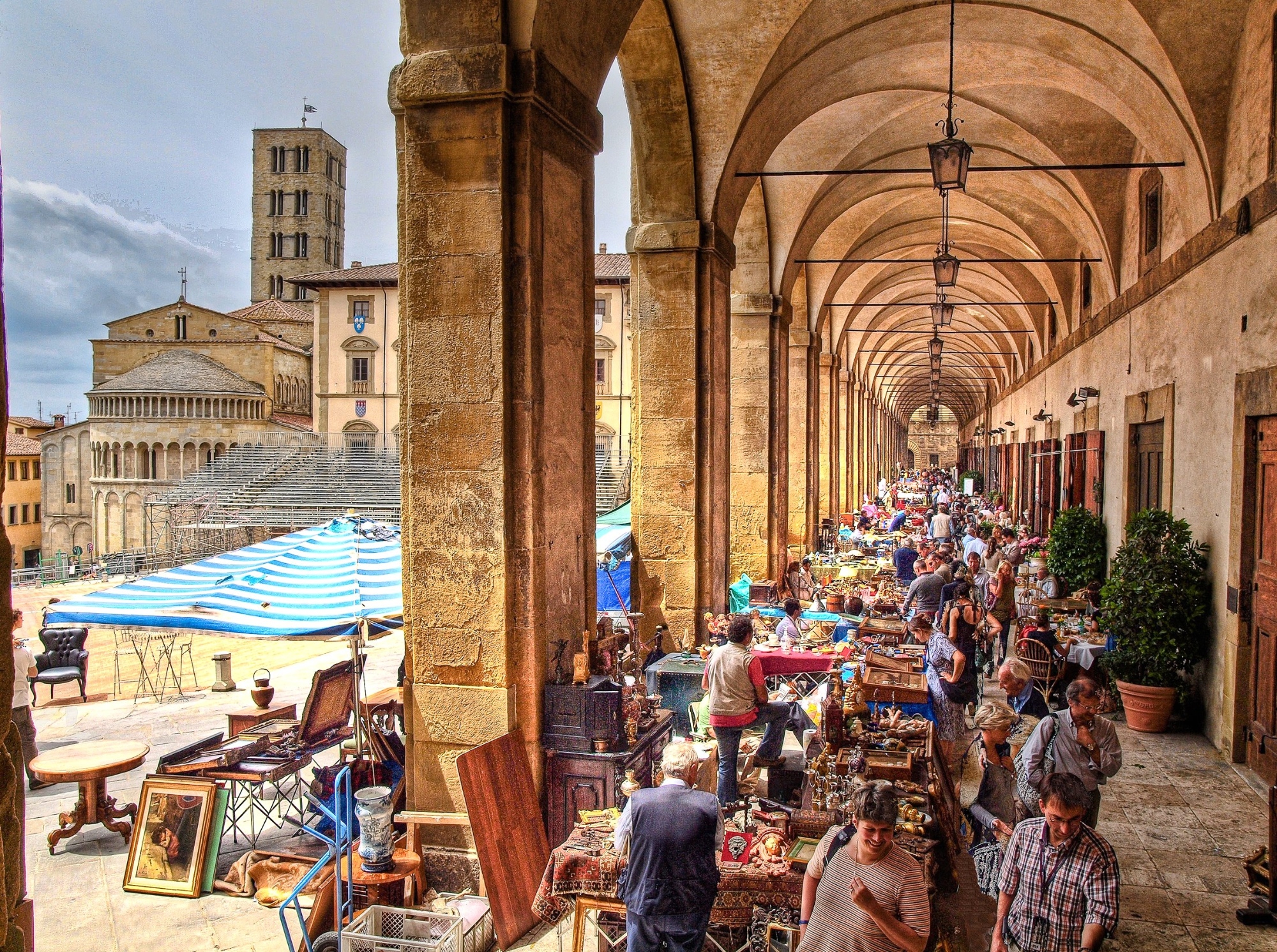
Arezzo is a bargain hunter’s paradise. Every first Sunday of the month and the Saturday before, piazza Grande, the city's main square, is packed with over 500 stalls, spilling out onto the side streets and alleyways. The Antiques Fair, the oldest one in Italy, draws huge crowds, sometimes up to 30,000 visitors, both locals and tourists alike, all looking for unique items. Roman coins, old telephones, ornate grandfather clocks and china are a few of the typical items to be found.
Even if you miss the monthly extravaganza, fear not: Arezzo has many more antiques to offer in its varied local shops, open all year round.
Piazza Grande
Known for its odd form because of it being built on a downhill slope, piazza Grande is a great place to visit, even without the hustle of the market. Dominating the highest part of the square is the splendid Palazzo delle Logge, designed by Giorgio Vasari.
With many cafes and restaurants nearby, the area is perfect for slow-paced day out. Don’t forget to check out the many coat of arms on the surrounding buildings, each one evoking an authentic medieval atmosphere.
The Cathedral
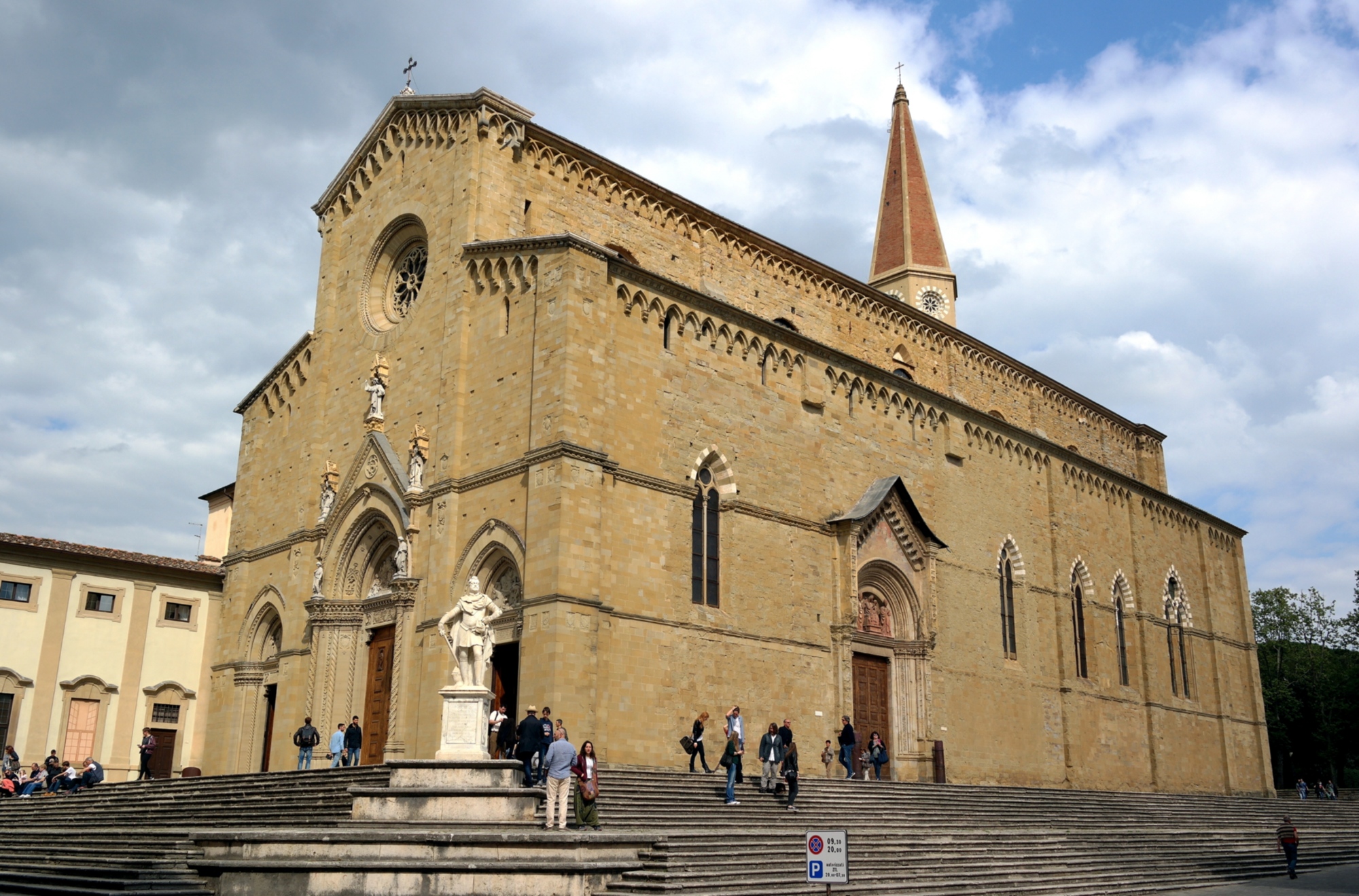
Sitting proudly atop the hill that dominates the city, the Gothic Cathedral of Santi Donato e Pietro hides intricate and awe-inspiring details inside. It contains the works of Andrea della Robbia, medieval stained glass, the baptismal font relief sculpted by Donatello and the beautiful Piero della Francesca’s fresco of St. Mary Magdalen, painted around 1460 in the left nave.
The Medici Fortress
Built between 1538 and 1560, the fortress is located within the city walls and was once an impressive five-point structure. The fortress boasts evidence of various building styles and was partially dismantled by the French in 1800. This can still be seen on the west side of the fortress, where explosion damage is still visible.
Although the stronghold is now just a reminder of the past, you can get a 360-degree view of Arezzo and the surrounding area from atop its walls.
San Francesco Basilica
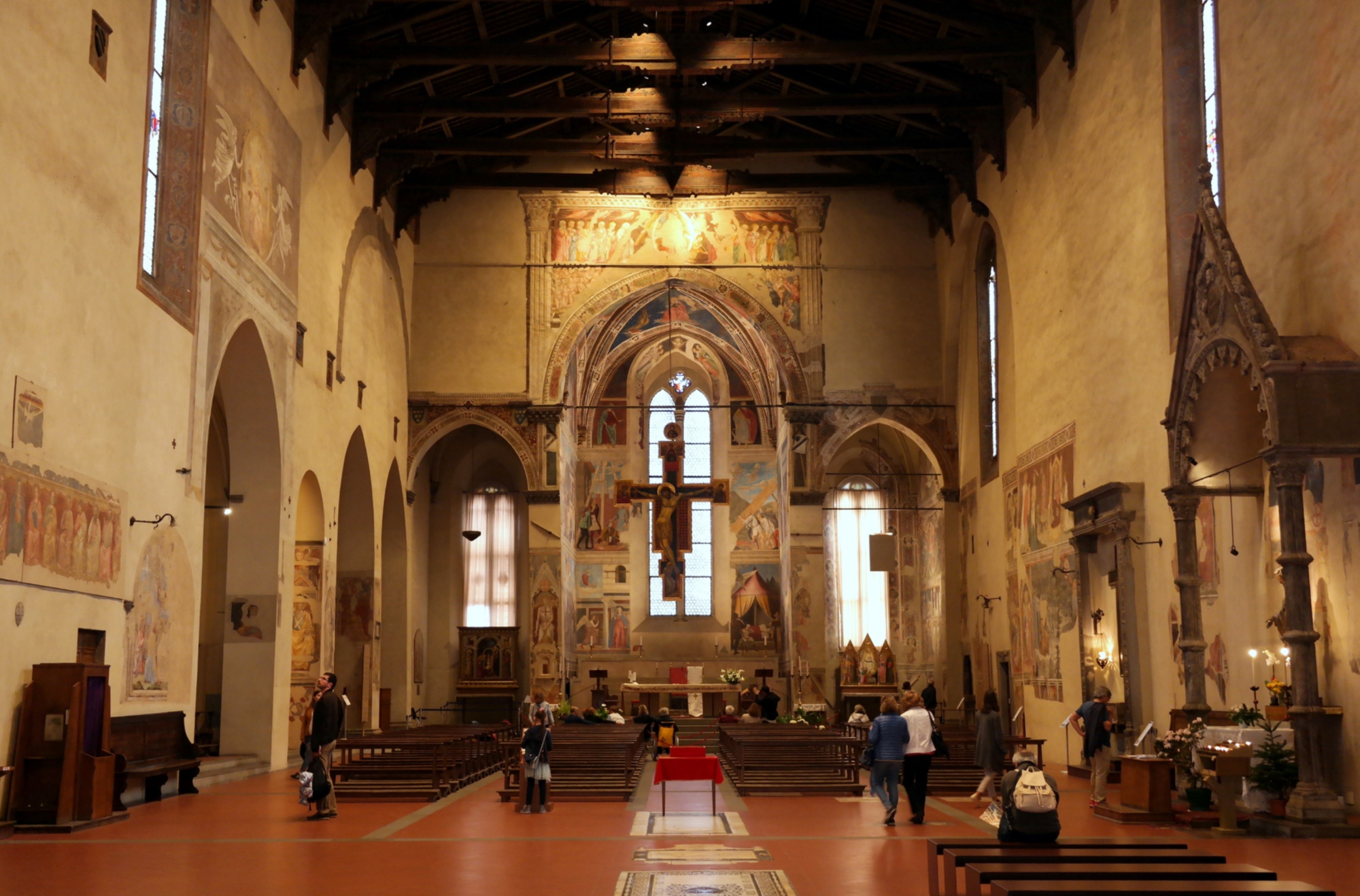
Perhaps modest and unassuming on the outside, this medieval church houses a Renaissance masterpiece: Piero della Francesca’s fresco cycle depicting the fifteen scenes of the Legend of the True Cross, on the walls of the Bacci chapel. The frescoes were started by Bicci di Lorenzo in 1447 and Piero della Franesca was probably called on to replace him after his death.
Church of Santa Maria della Pieve
The facade with three portals of this parish church stands out in Corso Italia, while the apse can be seen from piazza Grande. The tall bell tower is known as "from the hundred holes" because of its many mullioned windows. Inside, the polyptych with the Vergine col Bambino e i Santi Giovanni Evangelista, Donato, Giovanni Battista e Matteo (Virgin and Child and Saints John the Evangelist, Donatus, John the Baptist, and Matthew), immediately attracts attention: a work in tempera and gold on panel, it is a 14th century masterpiece by Pietro Lorenzetti.
The Saracen Joust
The penultimate Saturday of June and the first Sunday of September piazza Grande is turned into the centre of the Giostra del Saracino, a knightly tournament originating from medieval times. Competing for the trophy are the four historic districts of the city, each with two jousters, aiming to grasps a wooden spear. Preceding the competition is a historic procession, with a performance by flag throwers.
Archaeological Museum & Roman Amphitheatre
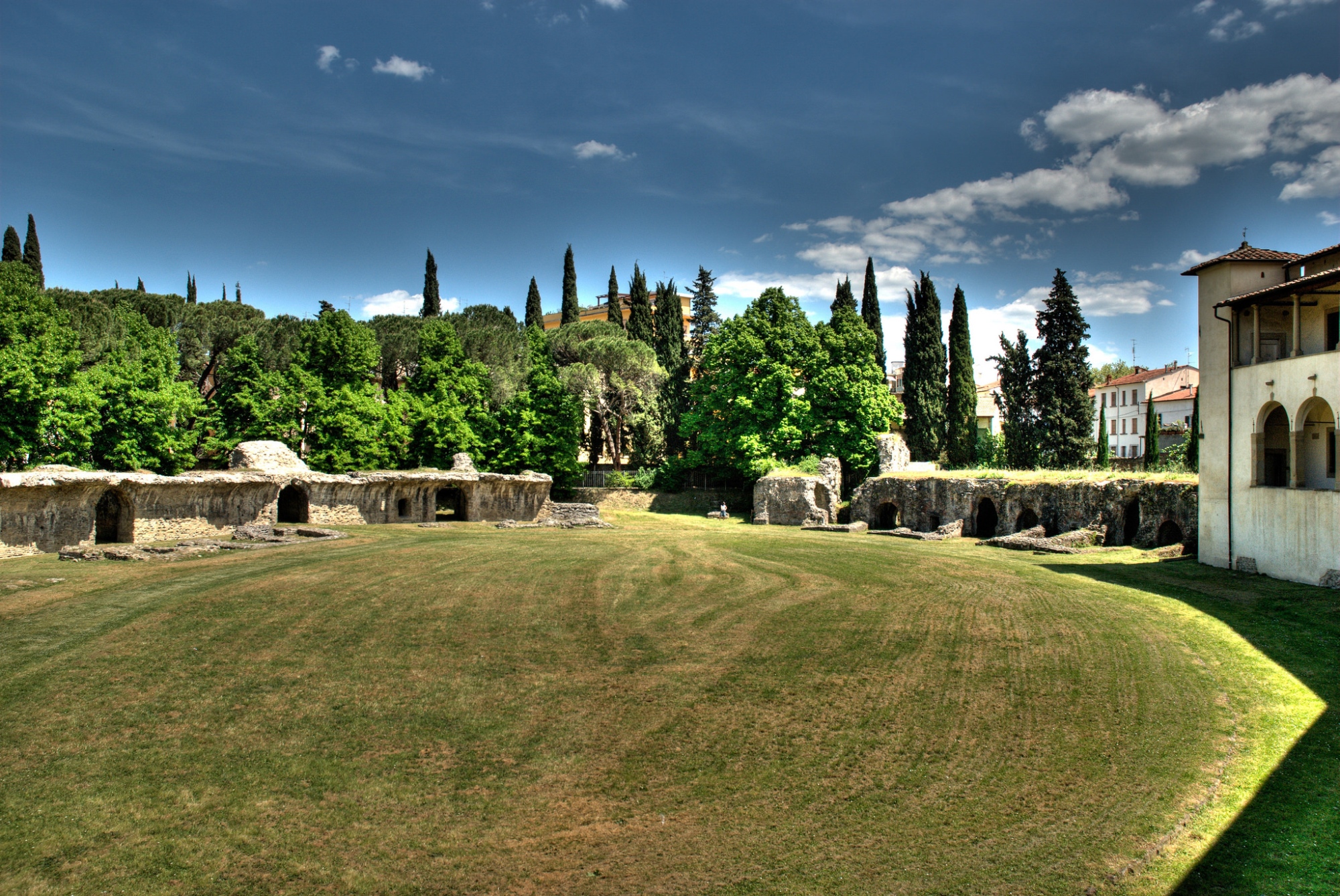
Located in the former monastery of San Bernardo, built partly atop the ruins of an an ancient Roman amphitheatre, this quiet museum displays many cultural gems from the 2nd century and is a great opportunity to get to know more of the ancient history. The collection goes from prehistory to the Etruscan and Roman times; do not miss the "coralline vases", a unique ceramic technique that made Arezzo famous since ancient times.
Museum of Medieval and Modern Art
A museum housed inside Palazzo Bruni-Ciocchi, or Palazzo della Dogana, one of the most beautiful Renaissance buildings, with a quaint courtyard and a grand staircase. The collection is the result of the cultural and artistic interests and activities of private collectors and of the city’s main institutions. It houses sculptures and paintings from the 13th to the 16th century, by Giorgio Vasari, Margaritone, Spinello Aretino, Parri di Spinello, Bartolomeo della Gatta, Luca Signorelli, Guido da Siena and Lorentino d'Andrea. There are also ceramics, glassware, coins, ivories, weapons and bronzes.
Vasari House Museum
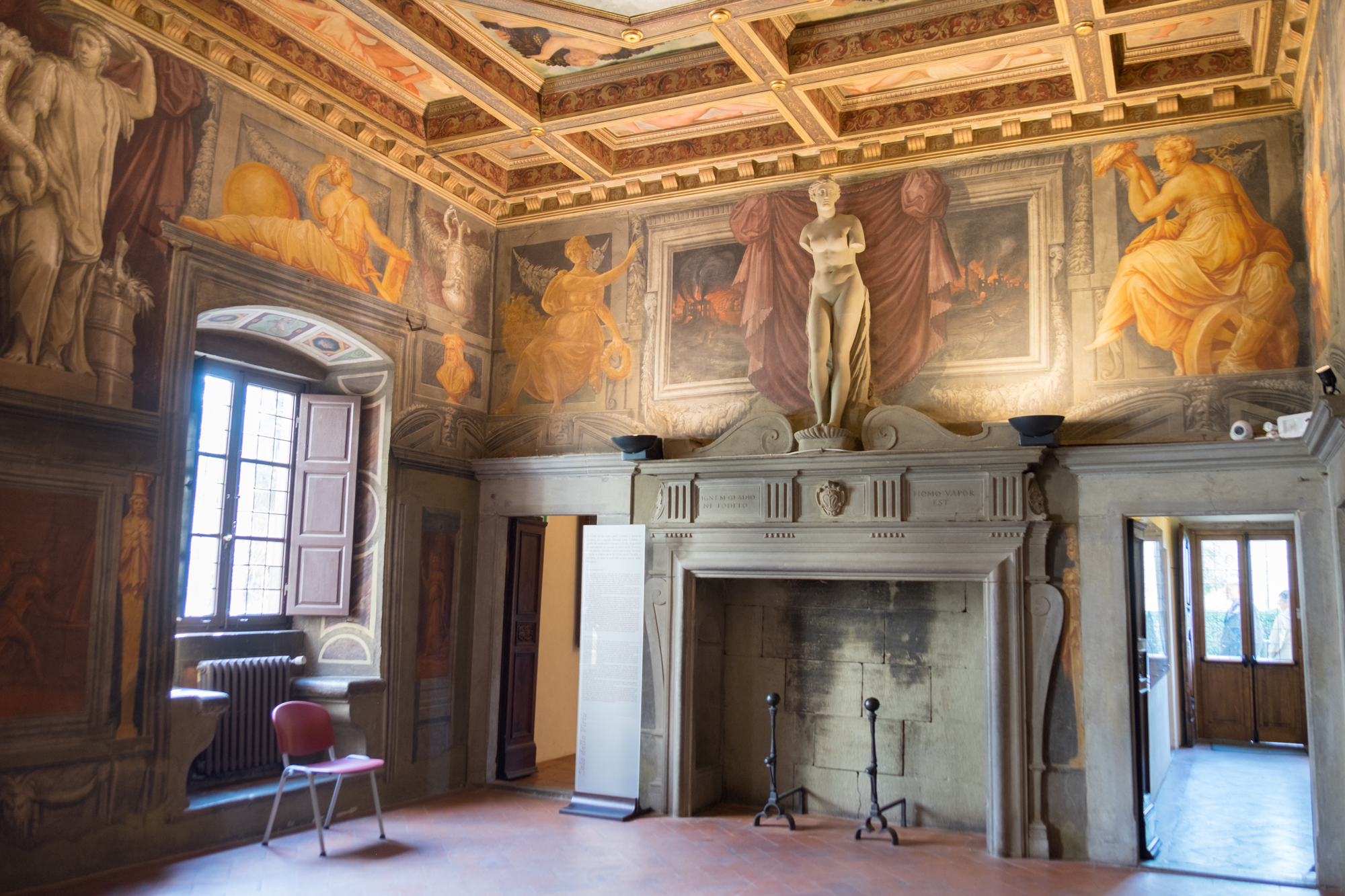
Easily forgotten and overlooked while visiting Arezzo, any art lover should add on his list the elaborate interiors of Giorgio Vasari’s home, a rare example of an artist’s house from the late Renaissance. The house is decorated with frescoes and tempera paintings by Vasari and his pupils, and around fifty paintings from the sixteenth century are also arranged across the rooms.
